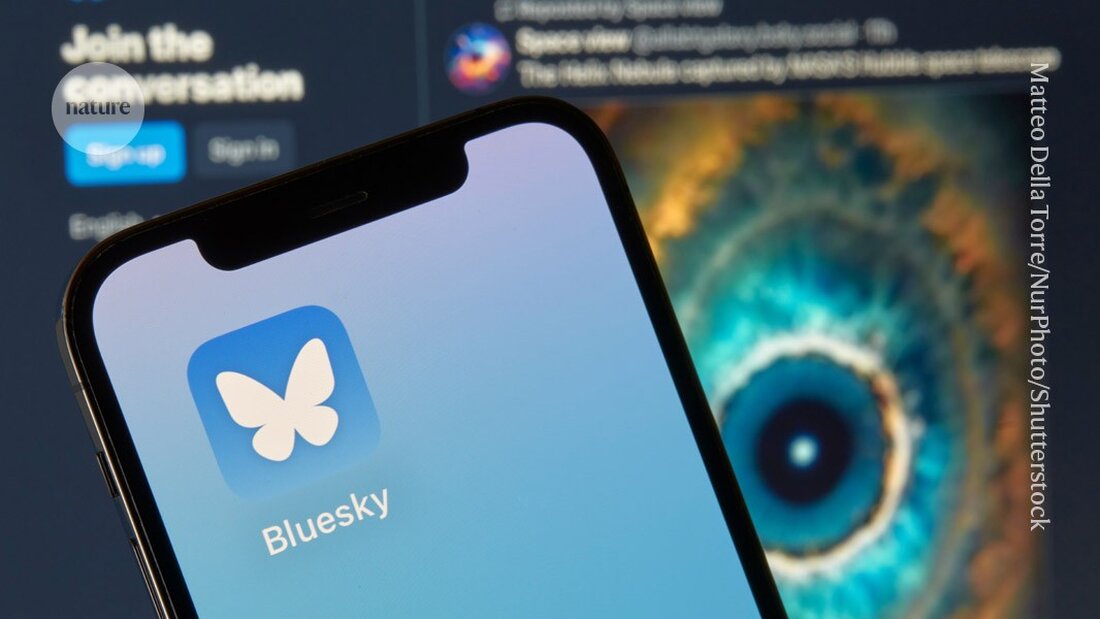One place of joy: why scientists join the Bluesky hype
One place of joy: why scientists join the Bluesky hype
researchers flock to the Bluesky Social Media platform, hoping to revive the good old days of Twitter.
"All academics are suddenly switched to Bluesky," says Bethan Davies, a glaciologist at the University of Newcastle, Great Britain. The platform has "absolutely exploded".
In the two weeks since the US presidential election, the number of users has risen from almost 14 million to almost 21 million. Bluesky has a broad attraction because it is very similar to the former Twitter - now known as X. This platform was extremely popular with scientists, which they used to publish research results, cooperation and networking. An estimate indicates that at least Had half a million researchers in 2022 Twitter profiles.
That was the year in which the billionaire Elon Musk bought the platform. He named it into X and reduced the moderation of content, including What caused some researchers to leave the platform . Since then, the presence of pornography, spam, bots and abusive content has increased on X, while the protection of the community has decreased, researchers report.
Bluesky, on the other hand, offers users control over the content they see and the people with whom they interact, through moderation and protective measures such as blocking and mutilation, according to the researchers. The network is also openly designed, which gives researchers and developers access to their data; X now raises high fees for this access.
Several similar social media platforms have also been created, including Mastodon and threads, but these do not have the same attraction as bluesky.
mass immigration
Daryll Carlson, a bioakoustic researcher at the University of New Hampshire in Durham, reports that she is the greatest influx of users on bluesky after US election . Musk has allied himself closely with the designated President Donald Trump. For Carlson, Bluesky offers a room for exchange with other scientists as well as with artists, photographers and the public. "I really want it to be a place of joy for me," she says.
On the platform, users scroll through feeds curated temporities of articles on certain topics. Users can like feeds, attach them or request them on their homepage, to share content on them.
A particularly popular feed is the science feed, in which scientists and science communicators share content. This feed was liked by more than 14,000 users and achieves 400,000 views a day. So far he has 3,500 participants, from ecologists and zoologists to quantum physicists, and this number increases quickly.
To become more involved, users must submit evidence of their research competence to a moderator. Mae Saslaw, a geoscientist at Stony Brook University in New York, examines the inquiries from geoscientific people who want to post in the feed, and has determined an increase from one request to half a dozen a day. As an early career researcher, Saslaw Bluesky felt useful to learn through new software, find interesting work and apply for places.
a safe space
For many researchers, the switch to bluesky means to regain control of what appears in their timelines. The feeds are an example of this; The platform also offers options to filter out content such as nudity and spam or certain phrases from their timelines.
Bluesky also offers a function that users referred to as "nuclear block" in order to prevent any interaction with blocked accounts - an option that is no longer available on X. In addition, users can regularly create and subscribe to updated, collaborative block lists, for example for insulting accounts. If a user subscribes to one of these lists, no content from these accounts appears in his timelines.
Clíona Murray, a neuroscientist at Yale University in New Haven, Connecticut, says that the protective measures offered by Bluesky are appealing. Murray was strongly rooted in X. She co-fonds an organization to diversify the neuroscience, which is called Black in Neuro and was there to a certain extent. But she began to develop the feeling that X is no longer a safe place.
Bluesky offers "starter packages"-listed lists created by users with accounts that can follow new members. Murray created one with the title Blackademics U.K.; She also points to the work of Rudy Fraser, an open source developer who has created a collection of feeds called Blacksky. This package includes a moderation tool with which users can report content that are racist and anti-black or contain misogynoir-expression of hatred, especially against black women-and can filter out them.
but while bluesky grows, the problems that X plague could also go home, say researchers. "There is definitely a risk that malicious players will settle there; bots may also be moving in," says Davies.
"With every big wave of growth there will also be a wave of spam and fraud," says Emily Liu, which leads the growth, communication and partnerships at Bluesky in San Francisco, California. "We have strengthened our trust and security team and stopped more moderators to counter all of this."
go or stay
Some researchers, such as Axel Bruns, a digital media researcher at Queensland University of Technology in Brisbane, Australia, reserve their Twitter accounts to protect them from imitators. Others have deactivated their accounts.
Madhukar Pai, a tuberculosis at McGill University in Montreal, Canada, reports that he lost about 1,000 followers in the emigration (he still has 98,000). But he hesitates to leave the platform. "If good experts leave X, who will offer evidence -based knowledge on X?"


Kommentare (0)